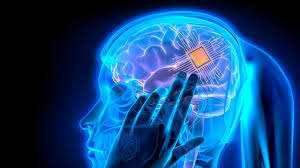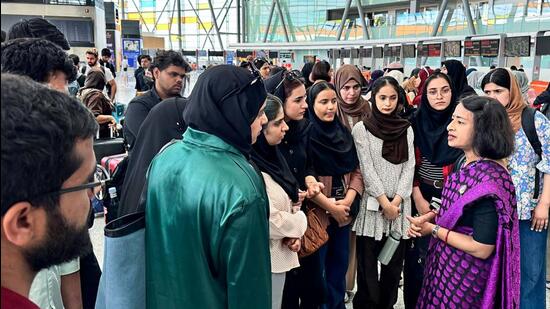- Courses
- GS Full Course 1 Year
- GS Full Course 2 Year
- GS Full Course 3 Year
- GS Full Course Till Selection
- Answer Alpha: Mains 2025 Mentorship
- MEP (Mains Enrichment Programme) Data, Facts
- Essay Target – 150+ Marks
- Online Program
- GS Recorded Course
- Polity
- Geography
- Economy
- Ancient, Medieval and Art & Culture AMAC
- Modern India, Post Independence & World History
- Environment
- Governance
- Science & Technology
- International Relations and Internal Security
- Disaster Management
- Ethics
- NCERT Current Affairs
- Indian Society and Social Issue
- NCERT- Science and Technology
- NCERT - Geography
- NCERT - Ancient History
- NCERT- World History
- NCERT Modern History
- CSAT
- 5 LAYERED ARJUNA Mentorship
- Public Administration Optional
- ABOUT US
- OUR TOPPERS
- TEST SERIES
- FREE STUDY MATERIAL
- VIDEOS
- CONTACT US
Human Enhancement
Human Enhancement
21-04-2025

- The human enhancement industry was worth 125 billion US dollars in 2024.
- It is expected to grow to 348.5 billion US dollars by the year 2033, according to a report by IMARC.
What is Human Enhancement
- Human enhancement means making changes to the human body using natural, artificial, or technological methods.
- These changes are made to improve a person’s thinking ability or physical strength and performance.
- Human enhancement is done through the use of drugs, hormones, implants, genetic engineering, dietary supplements, or cosmetic surgery.
- The aim of human enhancement is not to treat illness, but to go beyond normal human limits.
- For example, new technologies can help people become resistant to diseases like malaria, tuberculosis, and Lyme disease.
Human Enhancement: Types
1. Physical Enhancements
- Prosthetics and medical implants such as bionic limbs, pacemakers, and bionic eyes help restore or improve body functions.
- Performance-enhancing drugs are used by some people to improve physical strength or brain power.
- Cosmetic surgeries, including plastic surgery and orthodontics, are used to change or improve physical appearance.
- Strength training and dietary supplements are used to improve fitness, energy, and stamina.
- Exoskeletons are wearable machines that help people gain extra strength or support while moving.
2. Mental Enhancements
- Nootropics are drugs or supplements that are taken to improve brain functions like memory, focus, or learning.
- Neurostimulation methods such as transcranial magnetic stimulation and deep brain stimulation use electric or magnetic signals to affect brain activity.
- Cognitive training includes exercises and activities that help improve attention, memory, and thinking ability.
- Brain-computer interfaces are systems that allow the brain to send commands directly to machines, which may help in communication or control of devices.
3. Reproductive Enhancements
- Preimplantation genetic diagnosis is a method used to check embryos for genetic problems and choose those with preferred traits.
- In vitro gamete generation is a process where sperm and eggs are created in a lab, giving more control over reproduction.
- Reproductive cloning involves making a copy of a person using their genetic material, which could be used to create babies with chosen traits.
4. Genetic Enhancements
- Gene editing technologies like CRISPR allow scientists to make specific changes to DNA to fix problems or change traits.
- Genetic engineering is used to change a person’s genes to improve features such as intelligence, health, or physical strength.
5. Other Forms of Enhancement
- Virtual and augmented reality technologies are used to improve how people see or interact with their surroundings.
- Artificial Intelligence can be used to improve human thinking, decision-making, and problem-solving.
- Bioprinting uses 3D printing to make body parts or tissues, which can be used to repair or improve the human body.
Different Views on Human Enhancement
- Transhumanists support the use of technology to greatly improve human abilities and to extend human life.
- Bioconservatives believe that the natural human condition should be protected and not changed by technology.
- Bioconservatives are concerned that changing human life too much may take away what makes us truly human.
Concerns Related to Human Enhancement
- Access to human enhancement may not be equal, which can increase social inequality.
- Changing basic human features can create confusion about human identity.
- People may be forced to undergo enhancements without giving full and free consent.
- If most people use enhancements, those who do not may face pressure or discrimination.
- The long-term health effects of genetic and brain changes are still unknown.
- If people live much longer due to enhancements, it may increase the pressure on natural resources and the environment.
- Reducing genetic diversity through genetic engineering can make people more likely to get certain diseases.
- There is a need for strong and fair rules to make sure these technologies are used safely and ethically.
Human enhancement can help improve abilities, extend life, and bring progress in many areas. At the same time, it brings serious ethical, social, and environmental concerns. To protect human values, it is important to have fair rules, equal access, and full understanding of its long-term effects
|
Also Read |
|
| FREE NIOS Books | |




